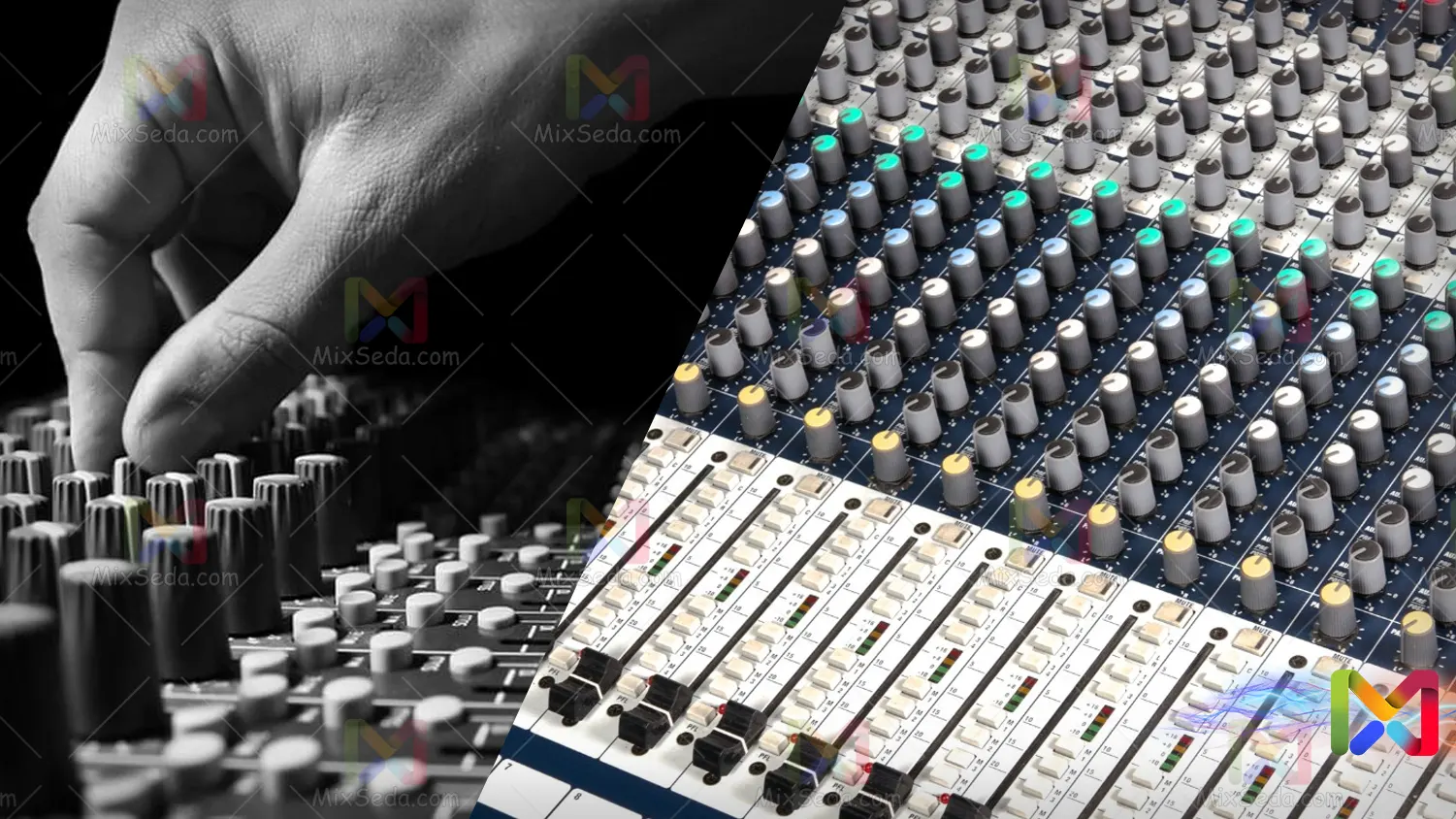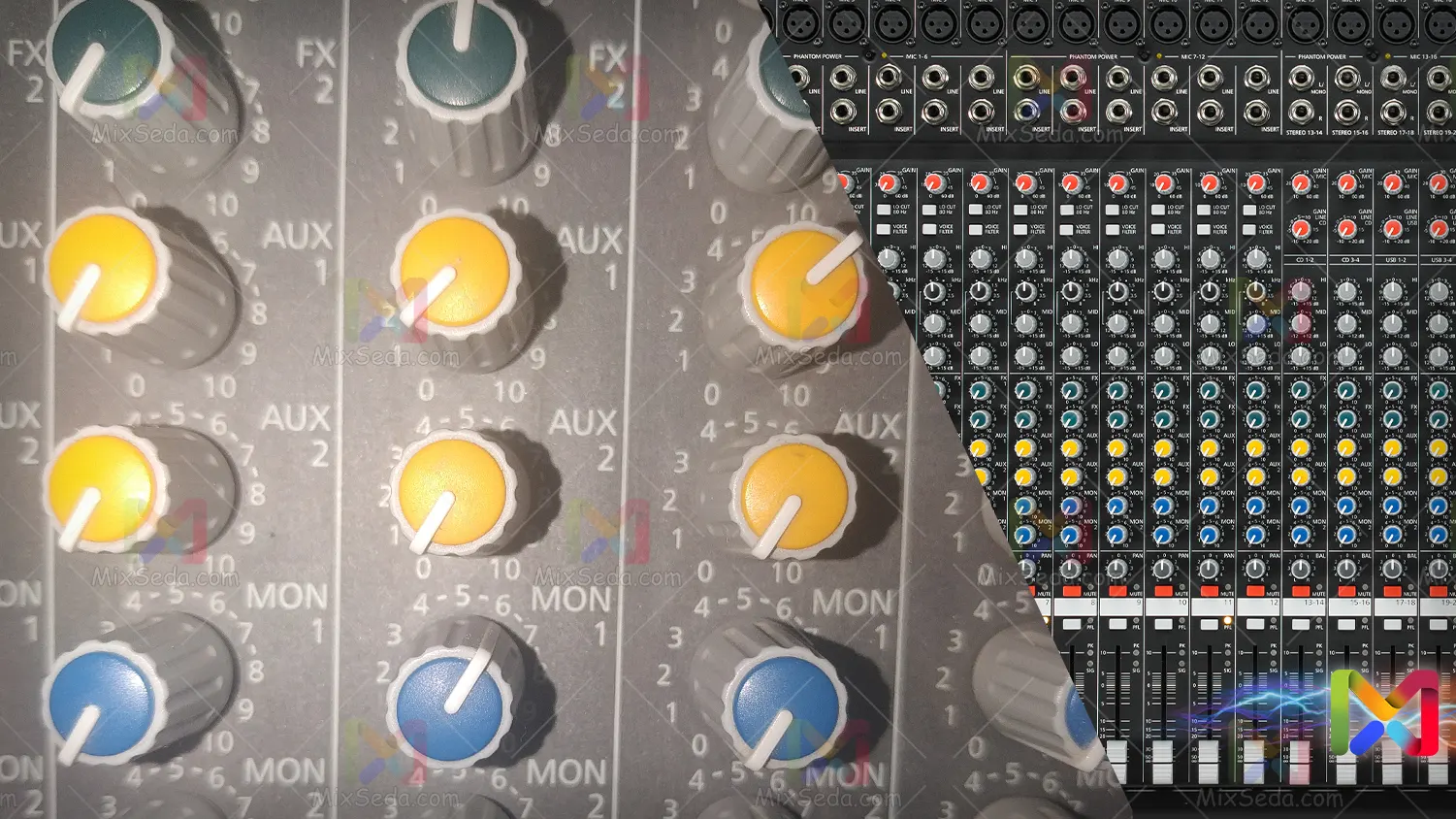
introduction
Except for old analog mixers, usually in all mixers we have a volume to get the output in each line of the sound. You may want to record some of the lines separately.
Or try playing them separately for different reasons. For example, for active speakers, you can control their sound separately. Or, for example, on many bulletin boards, the voice of the praise is mentioned separately.
These output volumes can help us get these outputs from any line.
Well, in this article, I want to address three issues:
- Ivory volumes in the Dynacord mixer
- Lunar volumes in the Dynacord mixer
- Output to digital mixers
AUX volumes in the Dynacord mixer
In mixers, these volumes are usually found below the parametric equalizer. But in Dynacord mixers, these volumes are below the FX volumes. In Dynacord mixers, the Aux and Mon volumes have independent effects.
Auxiliary volumes are usually used for sound quality due to their good quality. Of course, this volume is also used to get the output from USB, which I will explain in future articles.
Another point here is that the mute button at the bottom of each row affects this volume. This means that if this button is active, you will not hear any sound from this output volume.

MON volumes in the Dynacord mixer
These volumes with this name do not exist in all analog mixers. The Mon volumes in Dynacord mixers are located below the Aux volume. The use of these volumes is usually to connect the monitor to the mixer.
Of course, this output can be used to record sounds, series mixers and power supplies, and monitor active bands. Of course, I must also say that the effect output of these outputs is weak.
So it's not a good option for active band output. In fact, I have personally run into the problem many times that the quality of these outputs is lower than that of Ivex volumes. And when the praiseor or singer starts singing on the steps above, the sound of the effect is hard to hear. And in some cases, the effect sound is distorted.

Output to digital mixers
In fact, the placement structure of the volumes for the output in each line of sound is specific to analog mixers. Digital mixers do not need this type of structure at all. However, some of these mixers support this structure.
In digital mixers you will not have many limits for the output from a sound line. In digital mixers it is possible to digitally define the outputs for the device. For example, a row of sounds can have ten outputs.
In fact, this is one of the reasons digital mixers are so popular. This is why digital mixers are used more in programs with a large number of outputs, such as concerts.
